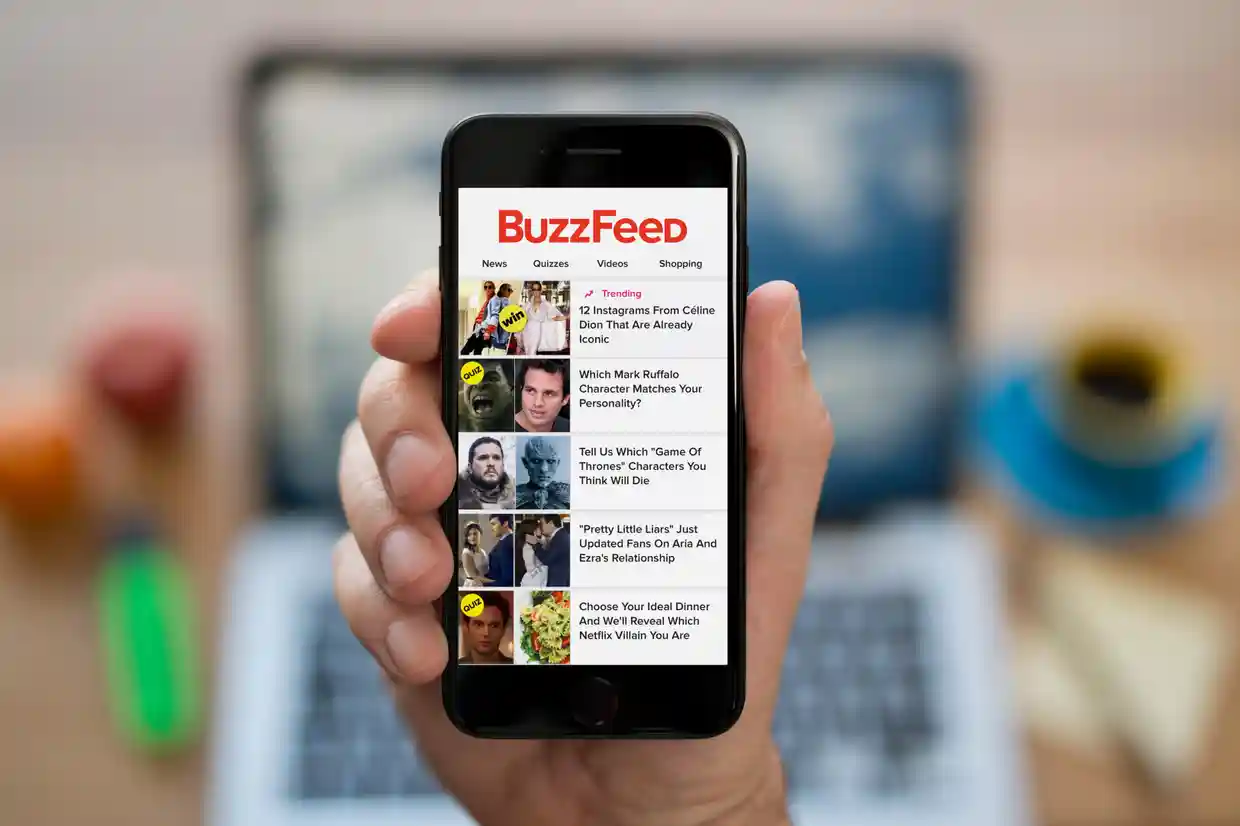
This article is more than
3 year old
Toward the end of Traffic, a new account of the early rock n roll years of internet publishing, Ben Smith writes that the failings of Buzzfeed News had come about as a result of a “utopian ideology, from a kind of magical thinking”.
No truer words, perhaps, for a digital-based business that for a decade paddled in a warm bath of venture capital funding but never fully controlled its pricing and distribution, a basic business requirement that applies to information as much as it does to selling lemonade in the school yard or fossil fuels.
Buzzfeed News, a pioneer of the internet news business that walked away with a Pulitzer Prize for international reporting in 2021, said it was shutting down its newsroom on 20 April after shares in the company tumbled 90% since the company went public. Buzzfeed CEO Jonah Peretti said the company “can no longer continue to fund” the site.
But that was just one of the pieces of bad news hitting the digital media sector.
Vice News, another pioneer of the period that once achieved a $5.7bn valuation, said it was re-organizing its news operation and cutting jobs as it seeks to sell itself. On Friday, Vice was said to be nearing a $400m acquisition deal from Fortress Investment Group and Soros Fund Management.
The deal, which would save the company from liquidation, would wipe out nearly every Vice stockholder, the Wall Street Journal reported, including backers such as private equity firm TPG Group, Sixth Street Partners and media mogul James Murdoch.
There have been other recent traffic-war casualties: Gawker, which could be said to have started the blog-to-publishing revolution in the early aughts, following the Drudge Report, closed again earlier this year after a brief re-incarnation. And a new round of layoffs at Disney hit Nate Silver’s data-driven politics and journalism brand FiveThirtyEight. Silver told FiveThirtyEight employees he expects to leave the site “soon”. Insider, too, announced serious lay-offs.
Tracing where the seeds of destruction for the insurgent news business were first scattered is an unfulfilling task. Most sites depended on a high number visitors, propelled by viral forces, that could then be harvested for data and sold to digital advertisers.
But the advertising model had deep flaws, not least that the flow of visitors to websites could be disrupted when the primary distribution networks for the traffic – internet giants Google and Facebook – could at any moment change their codes – algorithm – and send internet news customers elsewhere.
“It’s a whole combination of things, and everywhere you look there’s a different factor,” said Emily Bell, director of the Tow center for digital journalism at Columbia University. “Social platforms are, generally speaking, not places where you can build a business.”
Companies like Buzzfeed that had built advertiser-supported business on social platforms soon found they lost it, often to the social platforms themselves, Bell points out. “They are going to take your money and they are going to take your traffic because they can see exactly where it’s coming from and how much you’re paying for it.”
But at a certain moment Buzzfeed hit hard. It went from pioneering the humorous, irrelevant listicle – 25 celebrities that look like mattresses – to major, ground-breaking investigations and a Pulitzer Prize. It could also dominate news cycles, even if in controversial circumstances. It was Smith’s Buzzfeed who published the notorious Russian election interference “Steele dossier”.
At Vice, the story was appreciably different, more strange and far more of a roller-coaster ride. Like Buzzfeed, it received investment from private equity firms but also from A+E Networks and 21st Century Fox. But the same time, Vice founders pursued their own idiosyncratic paths. In 2015, Bloomberg reported that Shane Smith, Vice Media’s 53-year-old executive chairman, spent $300,000 on a dinner in Las Vegas. Smith later said the figure was mostly correct, except that it had come out to $380,000 with the tip.
Another co-founder, Gavin McInnes, who left the company in 2008, went on to found the Proud Boys. Last week four members of the group, including former chairman Henry “Enrique” Tarrio were convicted for seditious conspiracy in the January 6 Capital Hill riots.
If both Buzzfeed and Vice were in different ways emblematic of their eras, then they’re also unlikely to return. The dreams that they pursued were, like hundreds of other internet-based enterprises, a function of ultra low interest rates and speculative investment that have now passed.
“Clearly that VC route runs out after a while, and it’s never going to come back because of interest rates – you’re never going to get returns on investment putting into a Vice Media that’s missing it’s numbers compared to do something else with your money,” said Bell. “Being squeezed by private equity is an ugly place to be because it has no commitment to making media sustainable.”
At the same time, the Vice-Buzzfeed news insurrection may have achieved what they came to do – shake up the media landscape.
In doing so they created opportunities for original, smaller news operations, with a tighter focus and often behind a pay-wall, to form. The most successful of those –Politico, Axios, Puck, Airmail, Talking Points Memo – have found that adaptability is sometimes a greater attribute than hauling around a famous old media reputation.
But not always. The greatest legacy of Vice and Buzzfeed, says Bell, may be that they forced existing media brands to modernize. Once staid brands like the BBC, the New York Times, the Washington Post – and countless others – have fully embraced digital news and the digital revenues that come with it. They have often done so by hiring many of the names that emerged from their digital rivals.
“Their practices and the application of certain practices helped change journalism for the better, make it a bit more relevant,” Bell said “And the idea that lumbering legacy media would never get digital has turned out to be completely untrue – some of the strongest digital offerings come from organizations over a hundred-years old.”